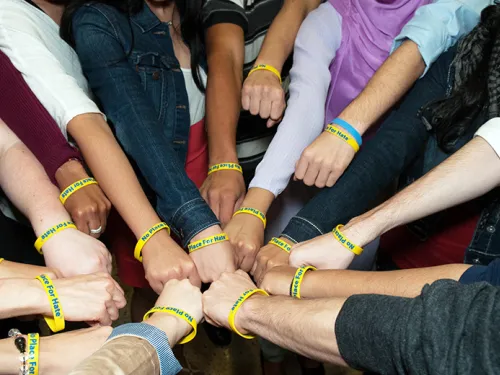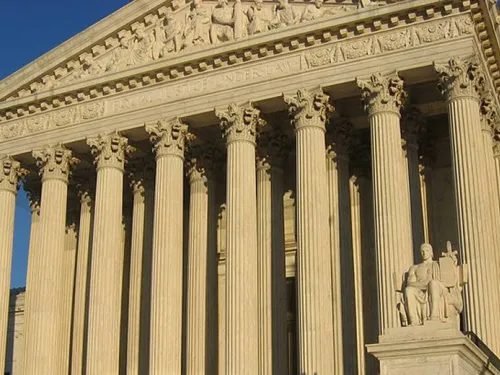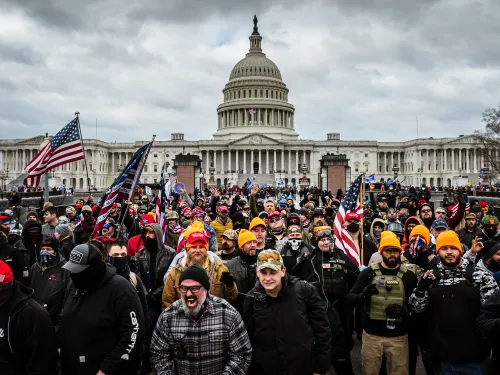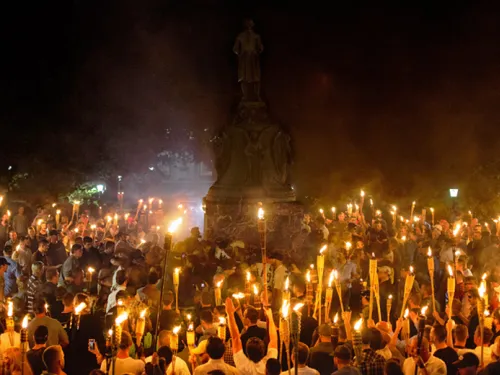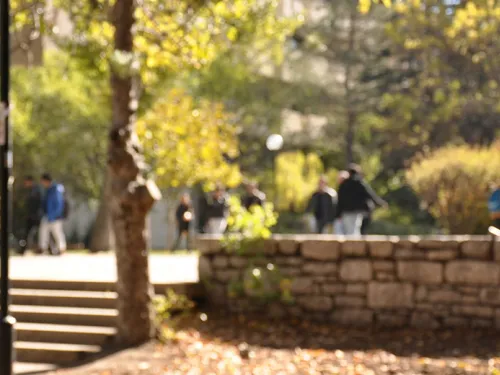Edan Alexander is free at last. Shortly after Hamas began its attack on October 7, 2023, Edan Alexander, an American-Israeli from Tenafly, New Jersey, was able to speak to his mother and tell her he was alright. Just half an hour later, she couldn’t reach him. Edan's family heard nothing from him for over a year and a half, except for the cruel propaganda videos released by the terrorists holding Edan hostage. After 584 days of agony, torture, and darkness – Edan has finally…
Search Results
43 Results

The year 2021 was marked by a series of heart-wrenching setbacks in the fight against hate around the world. From the Capitol insurrection on January 6 to brazen attacks on Jews, Asian Americans, and other marginalized groups in the streets of New York and Los Angeles, these events drew back the curtain on the prevalence of antisemitism and racism, fueled hatred in our communities and fostered division across society.
Fortunately, they did not come without repercussions or a response…
Nueva York, Nueva York, 2 de marzo de 2025 ... La Liga Antidifamación (ADL) honró hoy al juez argentino Carlos A. Mahiques con el Premio de la Fundación Leon y Marilyn Klinghoffer en la Cumbre Nacional de Liderazgo 2025. El juez Mahiques recibió este honor por ser el autor de la opinión mayoritaria en el fallo histórico de la Cámara Federal de Casación Penal argentina del 11 de marzo de 2024. Esta decisión puso en evidencia el…
ADL Honors Judge Carlos Mahiques for Bold Ruling on Iran's Role in AMIA Bombings
New York, NY, November 6, 2024 … ADL (the Anti-Defamation League) today congratulated President Donald J. Trump, Vice President-elect J.D. Vance and all the candidates who won last night. Jonathan Greenblatt, ADL CEO, issued the following statement: We congratulate President Donald J. Trump, Vice President-elect J.D. Vance and all the candidates who won last night. We look forward to working with the incoming Administration, Congress and all elected officials in pursuit of our 111…
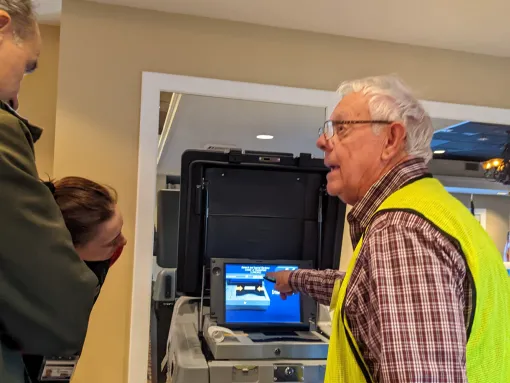
Engage in a family conversation about the role of election poll workers and discuss both the rewards and risks of being an election worker.
ADL’s new capacity to support municipalities, and others interested in using the law to deter harm and hold individuals and groups accountable for violent extremist actions. As our democracy as well as vulnerable communities are increasingly at risk of extremist violence and threats, ADL has expanded its capacity to support municipalities, community organizations and others interested in learning more about how to use the law to deter harm and hold individuals and groups responsible for…

La información falsa y engañosa sobre el voto y las elecciones perjudica tanto a los individuos como nuestra capacidad de hacer realidad la promesa de la democracia para todos. Esta guía puede ayudar a aclarar qué es la información errónea, en qué se diferencia de la desinformación, cómo detectarla y qué podemos hacer al respecto, incluyendo la búsqueda de información precisa sobre las elecciones.
Informaci…
Bills would restore and enhance portions of the Voting Rights Act of 1965 recently struck down by the U.S. Supreme Court New York, NY, January 20, 2022 … ADL (the Anti-Defamation League) strongly condemns the failure of the U.S. Senate to pass the Freedom to Vote: John R. Lewis Act. The Senate’s failure to enact this vital legislation leaves the touchstone of our democracy – free, fair, and accessible elections – vulnerable to ongoing assault not only from violent…
New York, NY, January 5, 2022 … More than a year since claims surfaced of a “stolen” or “rigged” election, and 12 months after the Capitol insurrection, conspiracy theories about the 2020 presidential election are alive and well. These lies have the potential to fuel future domestic extremist attacks, according to a new report from ADL (the Anti-Defamation League).
For its new report, “A Year After the Insurrection, 2020 Election Lies Continue to…
New York, NY, July 1, 2021 … ADL (the Anti-Defamation League) is deeply disturbed by today's Supreme Court decision further undermining the landmark Voting Rights Act. In its 6-3 ruling in Brnovich v. DNC, the Court said that the Act did not bar Arizona lawmakers from limiting voters’ access to the ballot, even though the Arizona legislation disproportionately affected Black and brown voters, Native American voters, students, and low-income voters.
“Unfortunately, this…

Civics Lesson
GRADE LEVEL: High School What Needs to Change to Increase Voter Turnout?
After every election, regardless of the outcome, people wonder how many people showed up at the polls to vote. The number is never as high as people would like, especially during midterm elections. In the 2016 Presidential election, 60.1% of the population eligible to vote showed up to the polls. During the midterm elections in 2018, only 50.3% of those eligible voted. While thousands of dollars…
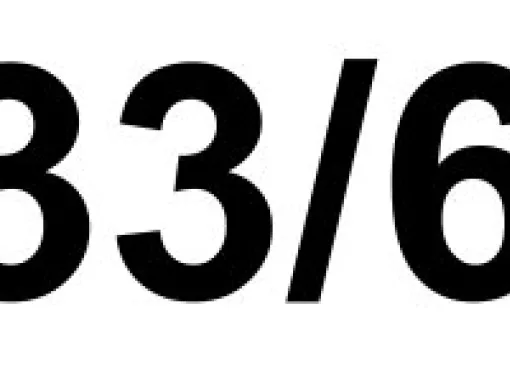
The number 33 is used by Ku Klux Klan adherents to signify the Ku Klux Klan. Since the 11th letter of the alphabet is K, three Ks signify "KKK" or the Ku Klux Klan. When using this reference, Klan members will frequently add the number 6 at the end, as in 33/6, because they think the Klan is currently in its sixth historical "era." Less commonly, some holdouts may still use the numeric code 33/5. Additional Images:

AKIA is Ku Klux Klan shorthand for "A Klansman I Am." It is related to another Klan acronym, AYAK ("Are You A Klansman?"). These are among the many acronyms developed by the Second Ku Klux Klan that emerged in 1915. Although the Second Ku Klux Klan did not survive, much of its terminology and many of its rituals did, and later Klan groups freely used them. Additional Images:

AYAK is Ku Klux Klan shorthand for "Are You A Klansman?" It is related to another Klan acronym, AKIA ("A Klansman I Am"). These are among the many acronyms developed by the Second Ku Klux Klan that emerged in 1915. Although the Second Ku Klux Klan did not survive, much of its terminology and many of its rituals did, and later Klan groups have freely used them. Additional Images:

ALTERNATE NAMES: Ku Klux Klan, MIOAKGroup Status: Active (in that there are many active Ku Klux Klan groups)
For the past century, the primary symbol related to Ku Klux Klan groups (other than Klan robes themselves) is what Klan members may call the MIOAK (an acronym for "Mystic Insignia of a Klansman"). It is more commonly referred to as the "Blood Drop" Cross. It appears as a square white cross in black outline against a circular red background. In the middle of the cross is what appears…
ALTERNATE NAMES: Ku Klux Klan, MIOAK
Read more about Blood Drop Cross
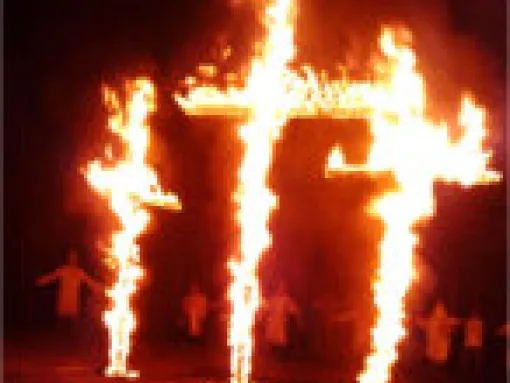
The image of the burning cross is one of the most potent hate symbols in the United States, popularized as a terror image by the Ku Klux Klan since the early 1900s. Cross-burnings (called "cross-lightings" by Ku Klux Klan groups, to make it seem as if they are not destroying a Christian cross) have long been used as a traditional symbol by Klan groups, used both in Klan rituals as well as in attempts to intimidate and terrorize victims of Klan groups. So widely associated with racial…

ALTERNATE NAMES: For God, Race and NationFGRN is a Ku Klux Klan acronym for "For God, Race and Nation," a common Klan slogan. It is one of a number of slogans, codes and rituals created by the Second Ku Klux Klan in the early 20th century. That Klan did not survive, but many of its codes and rituals were adopted by later Klan groups. In acronym form, the slogan is used primarily as a Klan identifier, typically appended at the end of on-line messages and postings. Additional Images:
ALTERNATE NAMES: For God, Race and Nation
Read more about FGRN
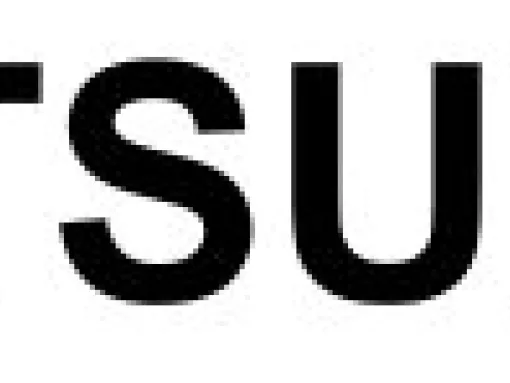
ITSUB is a Ku Klux Klan acronym for "In The Sacred Unfailing Being," a reference to God. It is one of many Klan acronyms created by the Second Ku Klux Klan that emerged in 1915. That Klan did not survive, but subsequent Ku Klux Klan groups continued many of its rituals and codes. Today, ITSUB has no real meaning or particular purpose and is typically used by Klan group members in on-line messages or posts solely as a way to identify themselves with the Ku Klux Klan. This has been the fate of a…

KABARK is a Ku Klux Klan acronym for "Konstantly Applied By All Regular Klansmen." It is one of many acronyms and codes developed by the Second Ku Klux Klan in the early 20th century. The Second Ku Klux Klan did not survive, but later Klan groups continued many of its codes and rituals. Today, KABARK is essentially meaningless and only used as a "sign off" in on-line messages by Klan group members, along with several other similar archaic acronyms. Additional Images:
